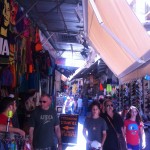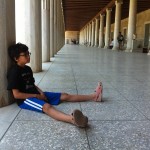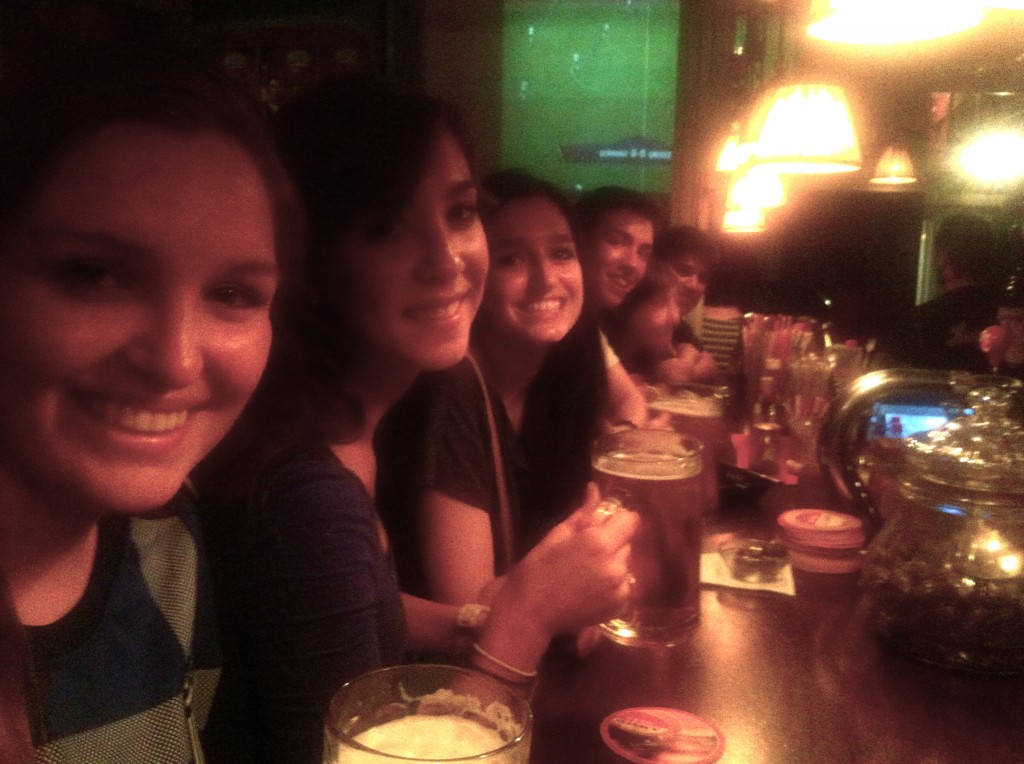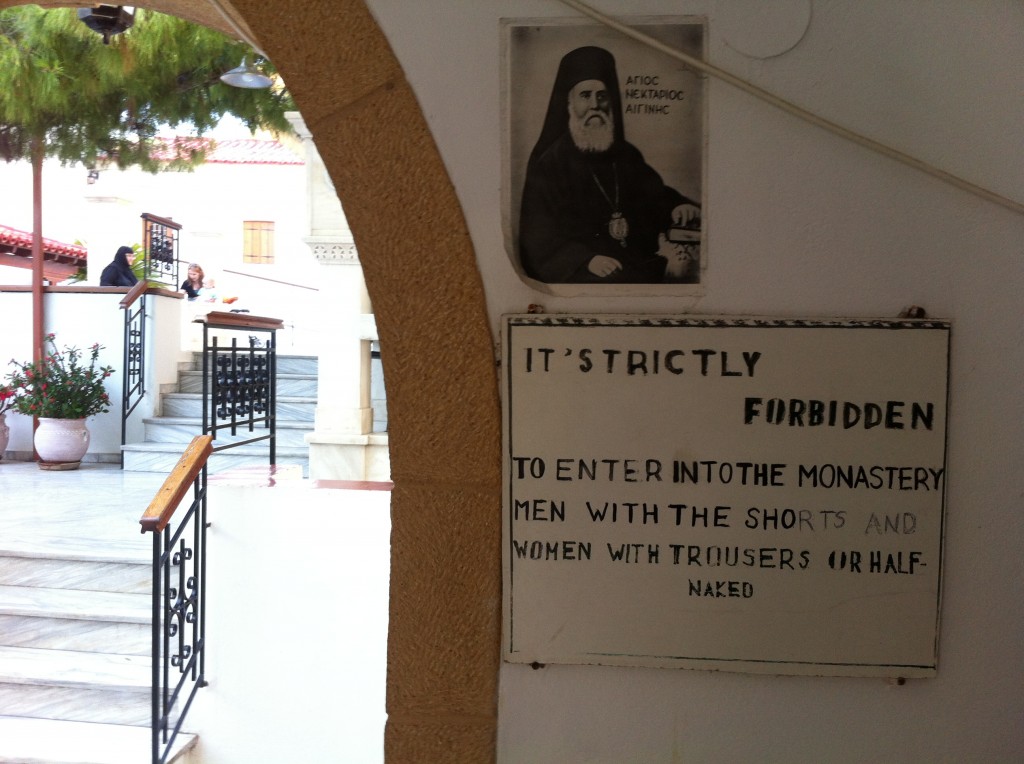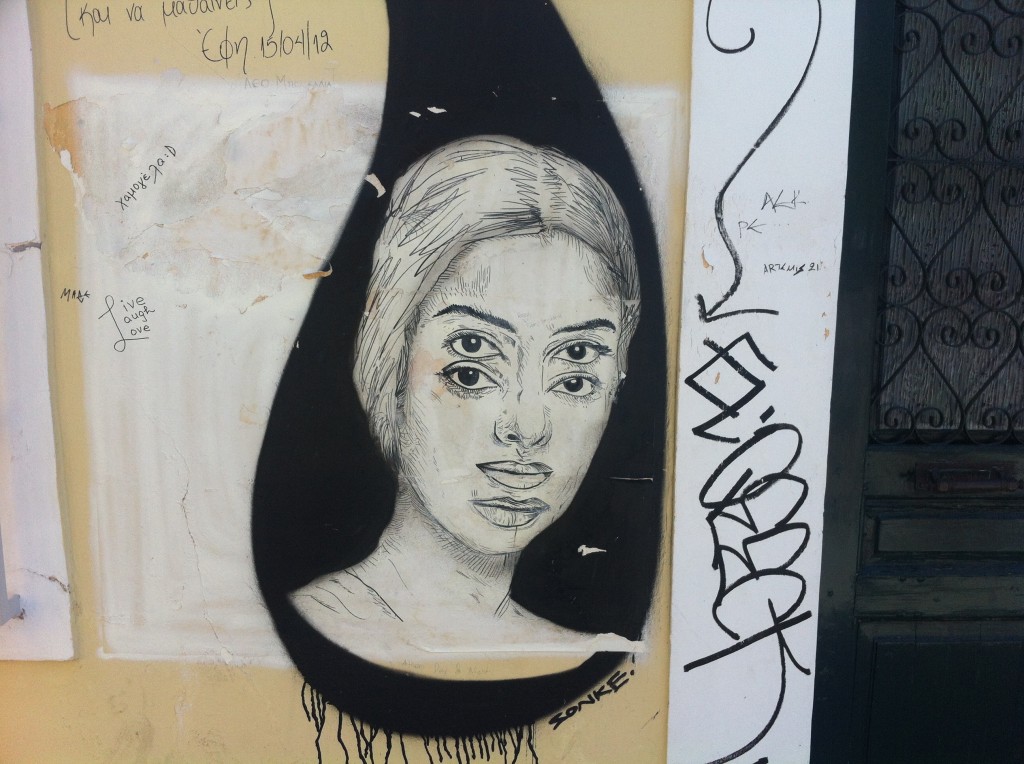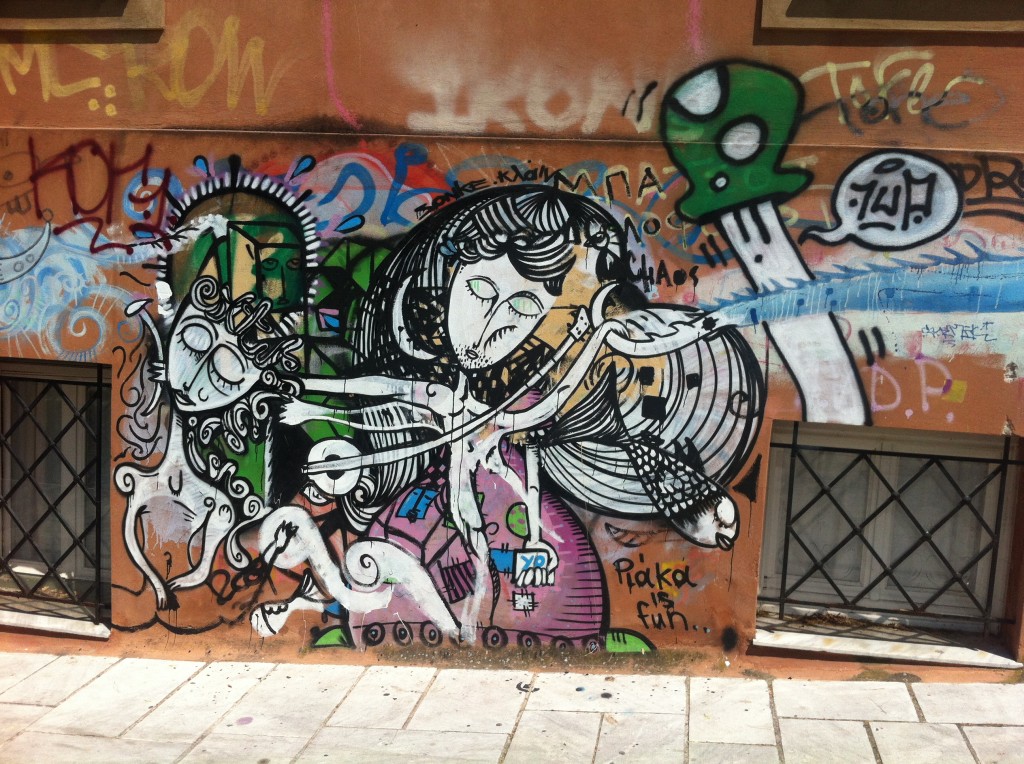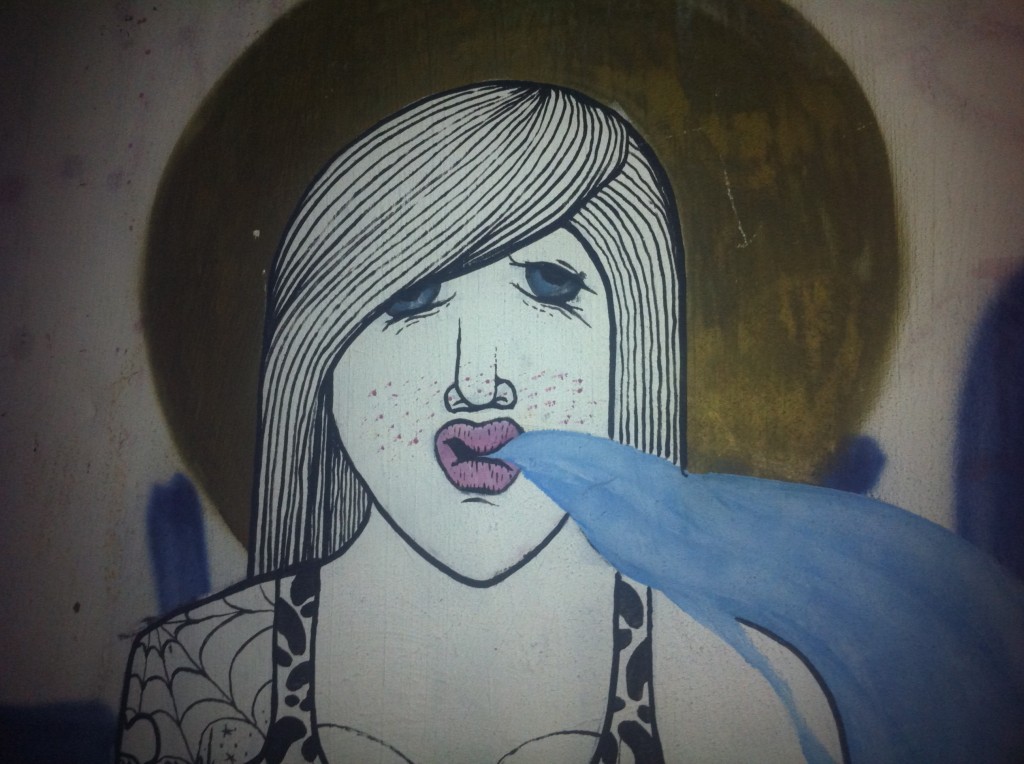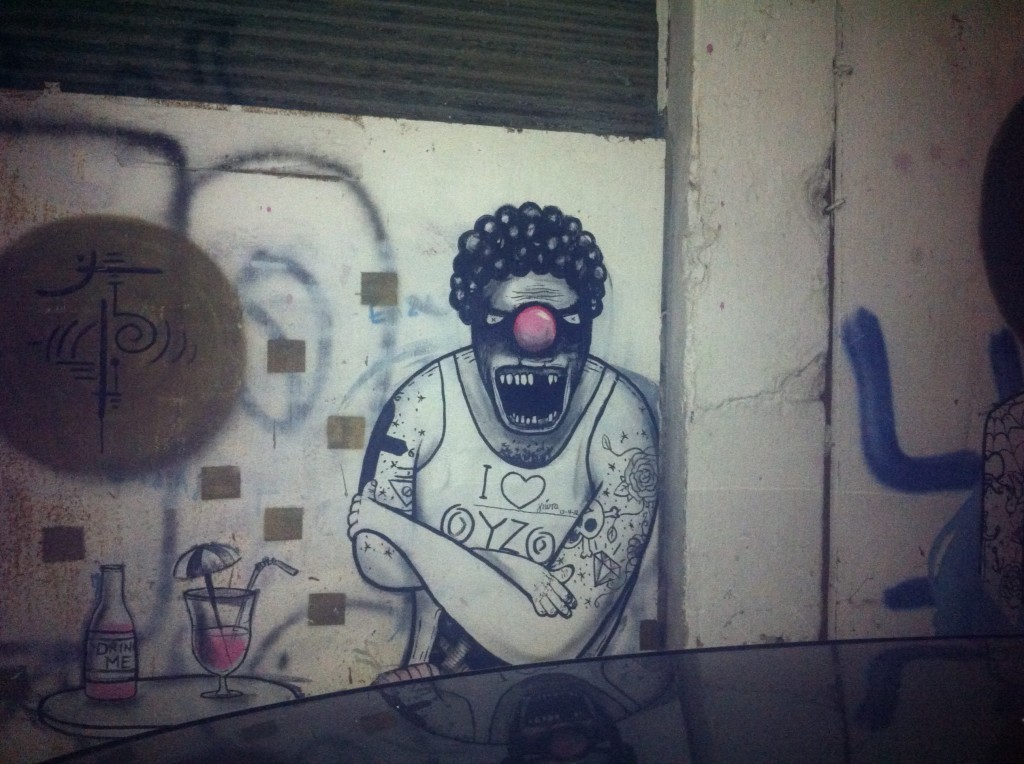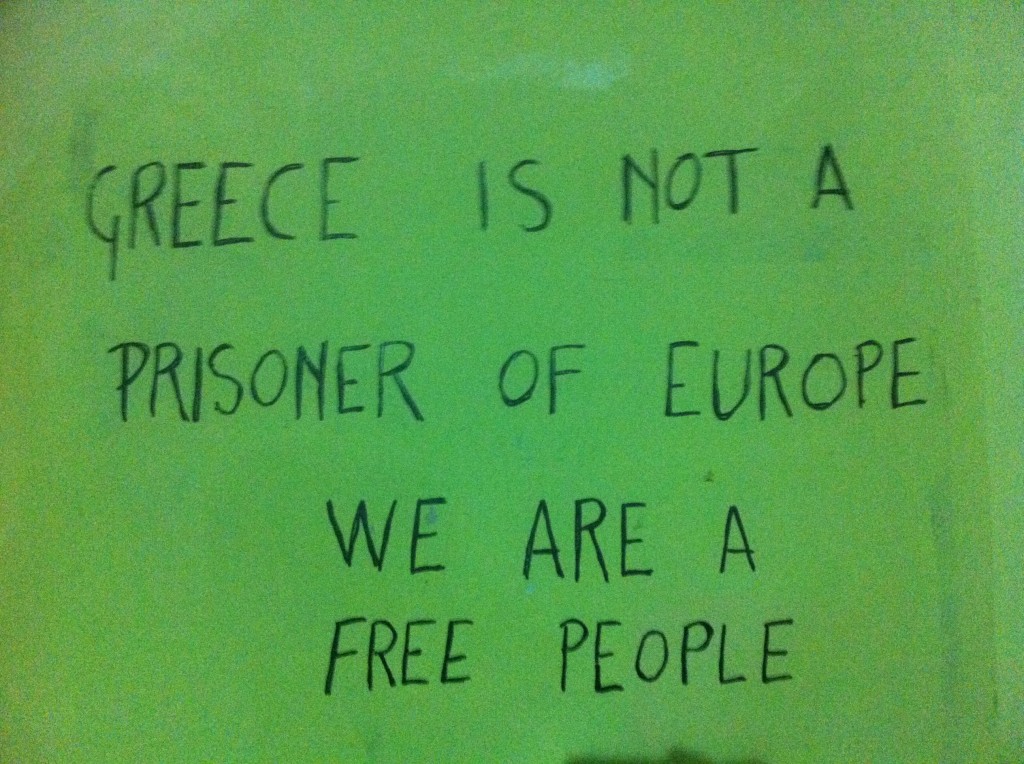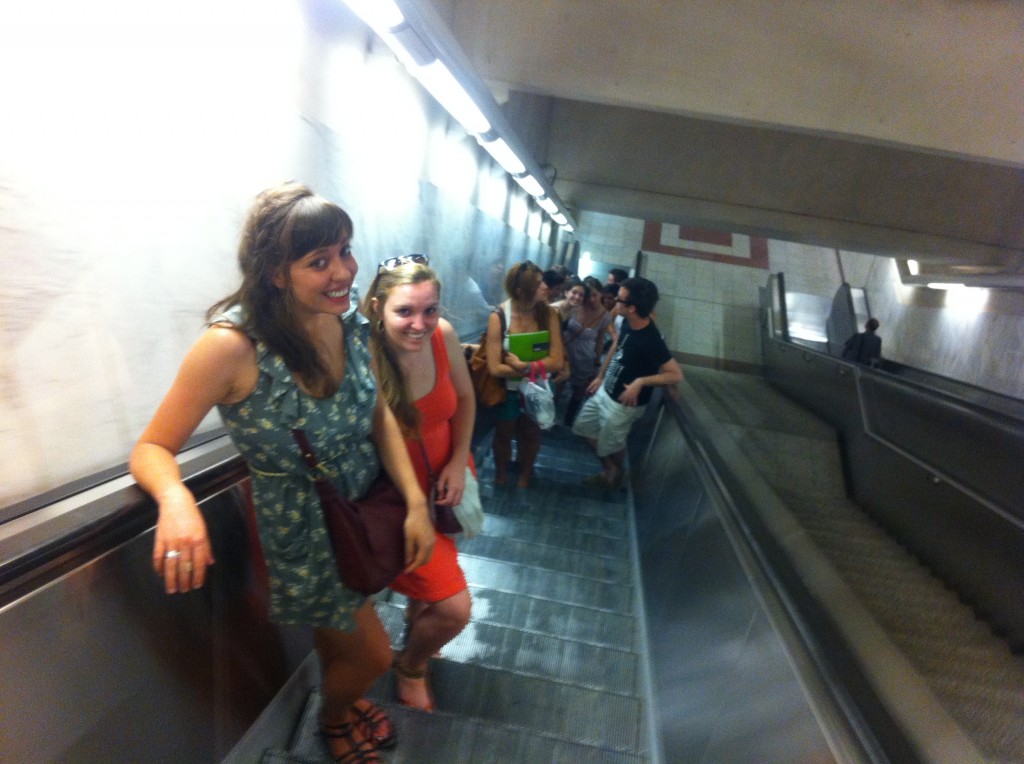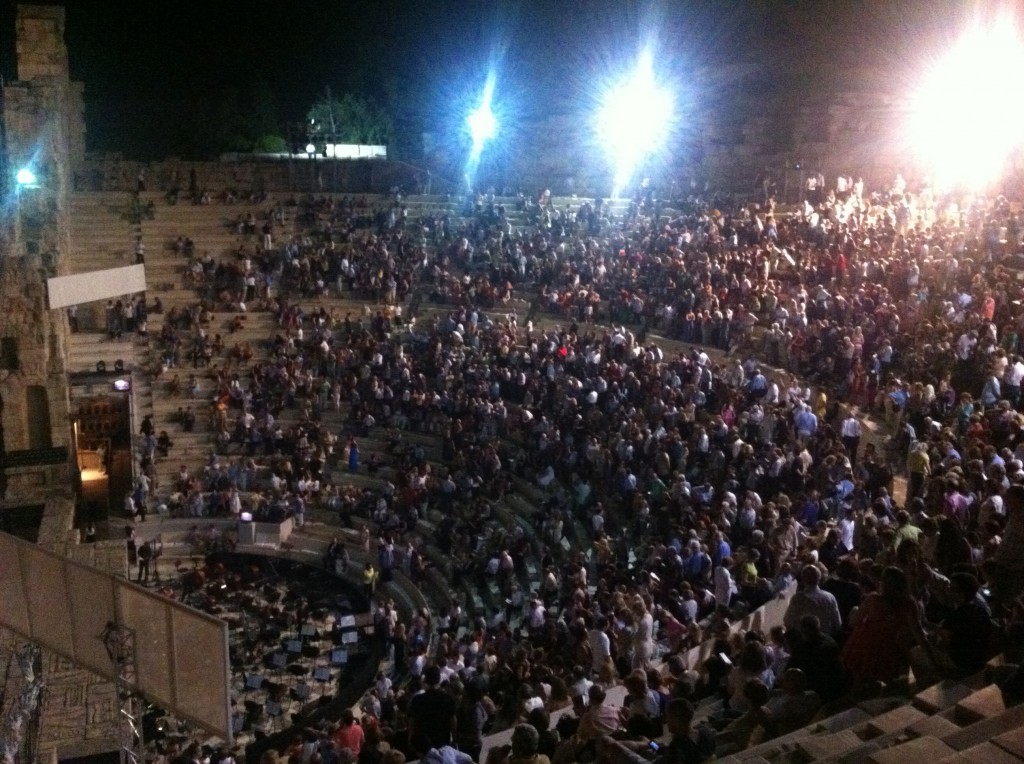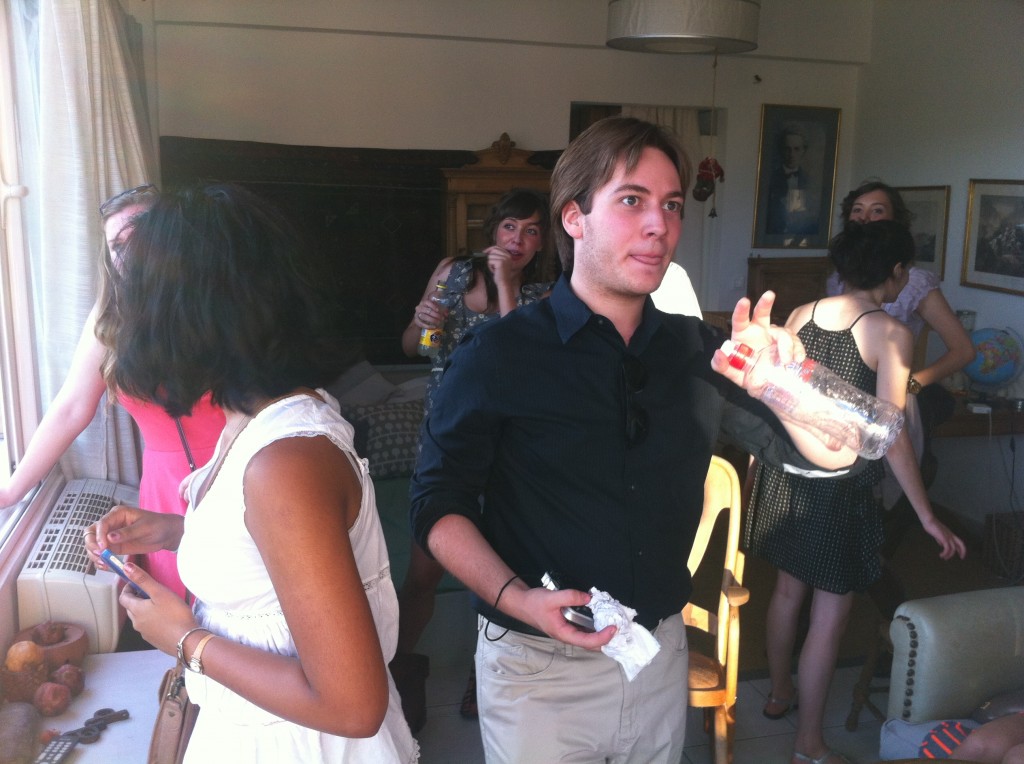Sunday is flea market day in Monastiraki–every side street is crowded with buying and selling, the goods ranging from antiques to plumbing supplies, to, as Suzannah memorably noted, oil paintings of Adolf Hitler. Athenians and tourists jostle side by side, poking through the wares, haggling with the vendors, drinking coffee, people watching, doing what people do in markets. A few steps away is the historical site of ancient Agora, the commercial and administrative center of Golden-Age Athens, which slumbered under layers of sediment and subsequent housing for a couple thousand years until being excavated in the 20th century. Most of the place is rubble, except for the temple of Hephaestus, which is the only Greek temple that still has its interior walls and part of the ceiling. Then there is the Stoa of Attalos, pictured above, which has been reconstructed and is a welcome refuge from the midday sun, as my son Sam demonstrates. In the ancient period, this place would’ve looked quite a bit like the Monastiraki flea market–full of Athenians and foreigners buying and selling and arguing and eating and taking advantage of a bit of shade. Going from one place to the other, as we happened to do this Sunday, a straight line is formed, 25 centuries long, and all these marble monuments come to life. This is not, of course, news to anyone who lives here, but I am constantly amazed to see direct connections between life in the time of Pericles and our own, perhaps less Golden, age.
Author Archives: tvasen
Watching Greece v Germany, when anything was possible
Perhaps taking the whole Princeton in Greece thing a bit literally
here we are in thorikos, the second-oldest theater in greece (the oldest is at knossos, in crete, but 6th century bc isn’t bad…)
apparently it is still under construction.
aeolus on the acropolis
a bit of wind reveals the inner medusa during our acropolis tour

